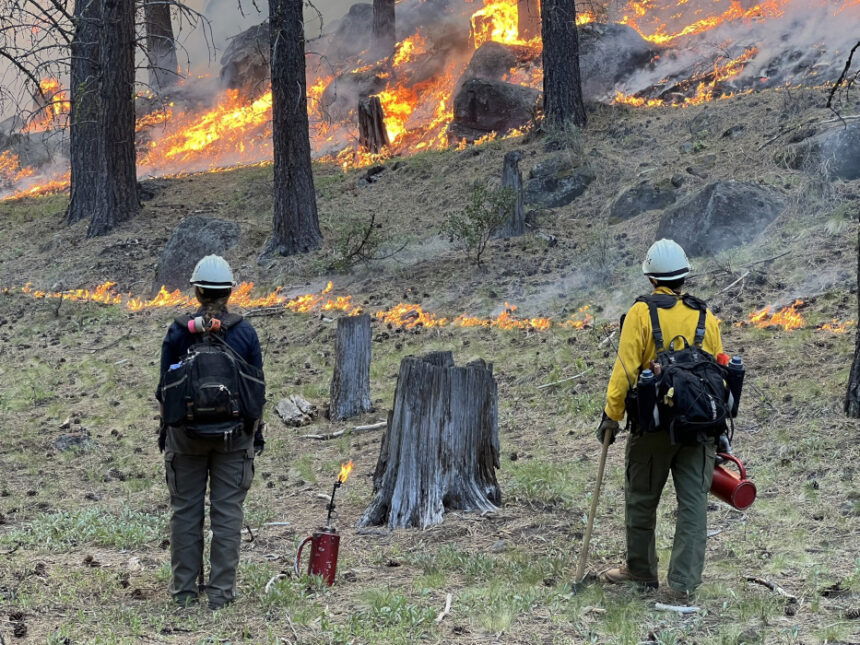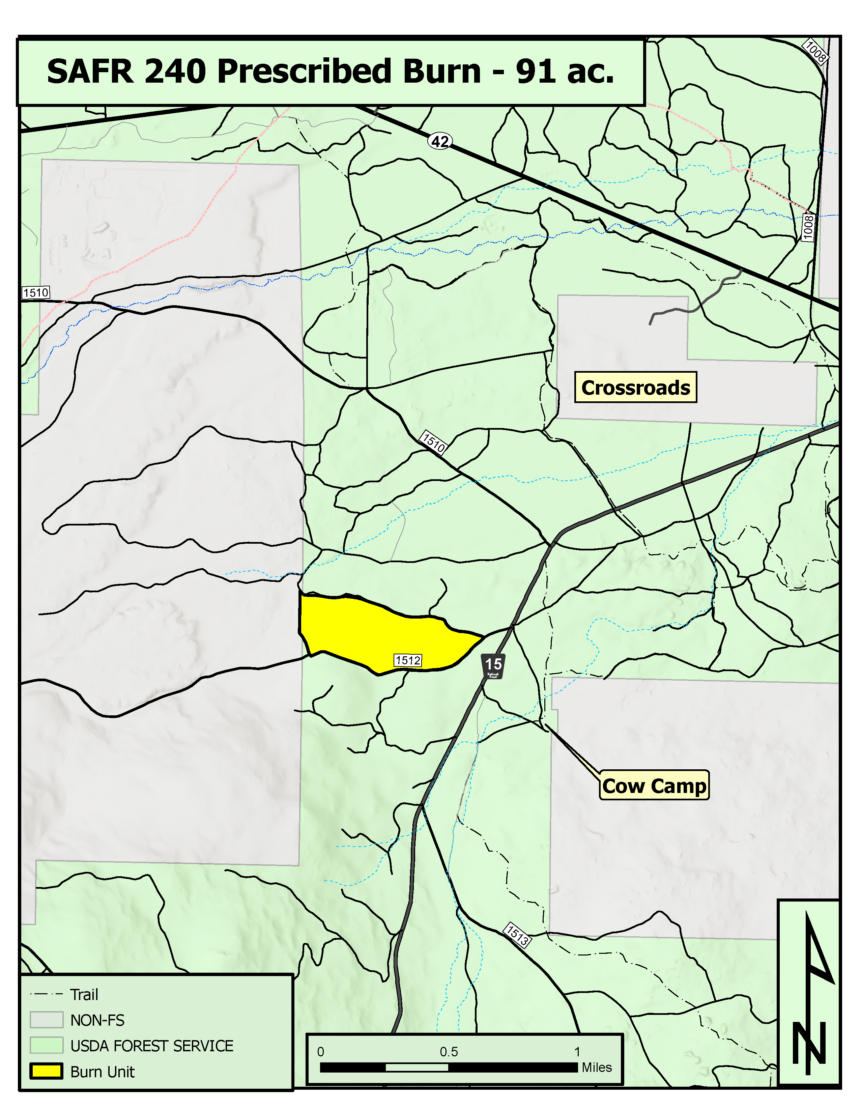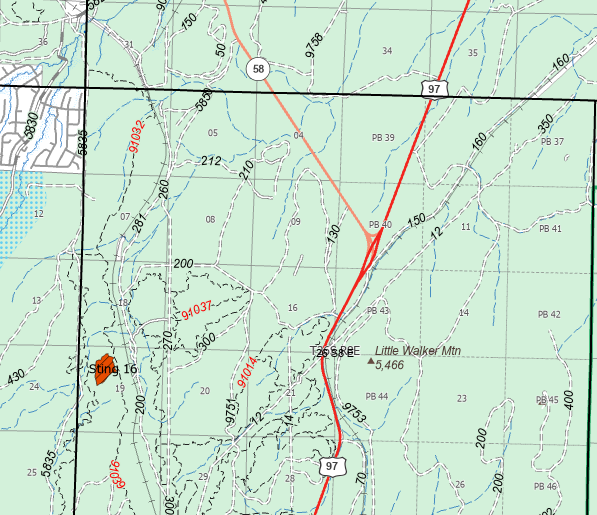Two prescribed burns conducted SW of Sisters and SW of Crescent; we’re getting a close-up look



Isabella Warrenvisited the site of a burn near Sisters; her report on KTVZ News at Five
BEND, Ore. (KTVZ) -- The Deschutes National Forest conducted two more prescribed burn operations Tuesday on the Crescent and Sisters ranger districts.
Firefighters on the Crescent Ranger District planned to conduct up to 42 acres of ignitions on the Sting 16 Prescribed Burn, located about 12 miles southwest of Crescent and two miles south of the Two Rivers subdivision.
The prescribed burn unit is located between OHV Trails #13 and #39. No closures are anticipated for these trails; however, officials say the trails may have some smoke impacts during and after ignitions. Smoke will be visible from Highway 97 and 58 and the surrounding area.
Residents in Two Rivers, Crescent Lake and Crescent are encouraged to keep doors and windows closed to minimize smoke impacts. Smoke impacts are most likely overnight and in the early morning hours.
Also on Tuesday, after a successful test firing, the Sisters Ranger District conducted 91 acres of prescribed burning on SAFR 240, two miles southwest of Sisters and one mile southwest of the Crossroads subdivision, at the intersection of Forest Service Road 15 and FSR 1512 near Sisters Cow Camp.
The burn was complete by early Tuesday afternoon and crews were transitioning to cooling down hot spots and securing the perimeter.
Smoke was visible from Sisters and the surrounding area. No road or trail closures are anticipated; however, smoke may impact FSR 15.
Isabella Warren is getting a behind-the-scenes look at this season's prescribed burns for a report tonight on KTVZ News at 5:00 p.m..
Drivers should use caution when traveling in the area. Residents in the Crossroads subdivision, Sisters and the surrounding area are encouraged to keep doors and windows closed, to minimize smoke impacts. Smoke impacts are most likely overnight and in the early morning hours.
Firefighters implement understory prescribed burning to reduce wildfire risk to communities. Prescribed burning reintroduces and maintains fire within our fire-dependent ecosystem by removing concentrations of vegetation and restoring forest health while increasing public and firefighter safety.
Fire management officials work with Oregon Department of Forestry smoke specialists to plan prescribed burns. Prescribed burns are conducted when the weather is most likely to move smoke up and away from our communities. While prescribed fire managers take significant preventive measures, it’s likely that communities may experience some smoke during or immediately after a prescribed burn.
What does this mean for you?
During prescribed burns, smoke may settle in low-lying areas overnight and in the early morning hours.
- All residents are encouraged to close doors and windows at night to avoid smoke impacts.
- If available, use a portable air cleaner. Air cleaners work best when running with doors and windows closed. You can also create a DIY air cleaner.
- If you have a central air system, use it to filter air. Use high-efficiency filters if possible.
- When driving in smoky areas, drivers should slow down, turn on headlights and turn air to recirculating.
- If you have heart or lung disease, asthma, or other chronic conditions, pay attention to how you feel and if symptoms of heart or lung disease worsen, consider contacting your health care professional.
- Go to centraloregonfire.org to learn more about smoke safety and prescribed burning in Central Oregon and visit When Smoke is in the Air for more smoke preparedness resources.
For more information on prescribed burning in Central Oregon, visit centraloregonfire.org/ and for information specific to the Deschutes National Forest, visit fs.usda.gov/r06/deschutes. Follow us on X/Twitter @CentralORFire. Text “COFIRE” to 888-777 to receive wildfire and prescribed fire text alerts.